Rewilding Europe’s writer and editor Daniel Allen spoke with Alexandros Karamanlidis, our regional manager and PhD wildlife biologist about the resurgence of apex predators across much of Europe, and the implications for conservation strategies and tourism.
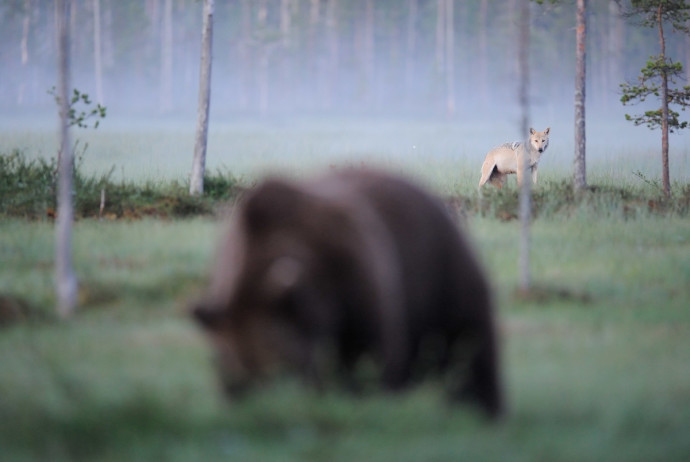
An ursine character
It’s perhaps fitting that one of Europe’s leading experts on large carnivores should describe himself as a bear of a man. Alexandros Karamanlidis, a member of Rewilding Europe’s senior management team and a regional manager based in Greece, has been involved with bears for nearly 20 years. He’s also a pretty hefty guy.
“One of my first jobs after graduation was collecting hair samples from bears,” explains the genial Greek. “From that point onwards these magical animals became my passion. When I get started it’s hard to stop me, so I guess both my character and my size are a little on the ursine side.”
Having carried out significant research and conservation projects on both brown bears and wolves in Europe, Karamanlidis is Rewilding Europe’s large carnivore specialist. He knows that apex predators such as bears and wolves can be amongst the hardest animals to conserve, especially on a continent as developed as Europe.
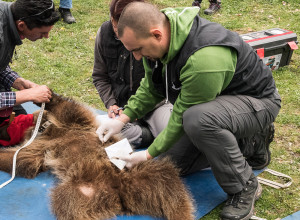
“These animals require large areas of land to roam and a sufficient prey base to survive and flourish,” he says. “The average home range of a male brown bear, for example, can be 1 000 square kilometres or more. This has always made them difficult and expensive to protect.”
Compounding the problems associated with these ecological demands, carnivore conservation typically involves contentious social issues too. The threat of conflict with humans, combined with the frequently negative portrayal of apex predators in everyday society, often makes carnivore conservation programmes highly controversial. It is the
magnitude of these challenges that makes the ongoing comeback of many of Europe’s large carnivores, totally unaided by man, all the more remarkable.
Continental comeback
With its large cities, modern infrastructure network and extensive areas under intensive agriculture,
Europe seems an unlikely place for a large carnivore comeback. But despite this, a 2011 study commissioned
by Rewilding Europe from the Zoological Society of London (and partners) found five European carnivore species – the brown bear, Eurasian lynx, wolverine, grey wolf and golden jackal – all expanding their range. In many areas of the continent, these animals are surviving and increasing outside protected areas.
“This comeback, especially with regard to wolves and bears, shows the amazing resilience of these
animals,” says Karamanlidis. “Populations are returning in a human-dominated landscape.”
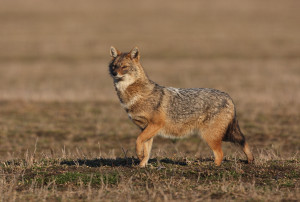
The golden jackal, often overlooked as a large carnivore in Europe, is currently staging a spectacular westward expansion of its range. From a stronghold in south-east Europe, it has now been sighted in Estonia, Germany, Denmark and the Netherlands. Perhaps the most remarkable comeback is that of the wolf. Spreading outward from Poland and the Carpathians, packs and individuals have now been spotted as far west as the Netherlands, Belgium and Luxembourg. Just two decades ago there were no wolves in Germany. Now experts estimate there may be as many as 150 in the east of the country, and 12 000 across the whole of Europe.
“If wolves could swim to London, they would,” says Karamanlidis. “Despite the presence of man, these animals are thriving and filling a niche.”
Drivers for expansion
Just how is it that large carnivores are making a comeback? According to Karamanlidis, the reasons
are numerous. “Land abandonment and massive rural depopulation is a major factor,” says the Greek. “Since 1961 there has been a 28% decline in the human population in rural Europe. Many European countries also have robust conservation legislation, such as the EU Habitats Directive, that protects these species. People’s environmental education and awareness is increasing. Lastly, these animals are incredibly adaptive.”
With brown bear numbers thriving in more populous parts of Sweden and wolves returning to many parts of northern Iberia, some carnivores are actually doing well in relatively “unwild” areas. “Just look at the brown bears of Greece,” says Karamanlidis. “They live in inhospitable areas, but still manage to thrive. “Female brown bears with cubs have actually been known to come closer to human populations, because they want to protect their offspring from male bears.”
Risks and rewards
The arrival of large carnivores in European habitats where they were previously absent is having both an ecological and social impact. As these animals come into closer contact with humans, some conflict is inevitable. In the past, predation of livestock by carnivores was a major contributory factor in their decline.
Such predation is often a symptom of depleted natural prey populations. “The weakest link in the carnivore comeback is large herbivores,” says Karamanlidis. “Rewilding Europe is now working hard to reintroduce animals
such as red deer and bison, in areas such as the Rhodope Mountains and Southern Carpathians, which were removed by man. These reintroductions boost the natural prey base for carnivores.”
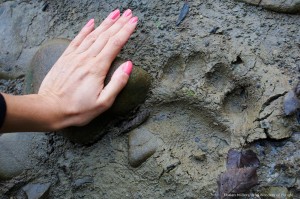
In all of Rewilding Europe’s pilot areas carnivore species play an integral role in shaping the local conservation setting. Putting opportunities into a local context is vital to sustain carnivore comeback in these areas, and mitigate human-carnivore conflict. A memorandum of understanding, signed in 2014 between Rewilding Europe and the Large Carnivore Initiative of Europe (LCIE), an initiative of the International Union for Conservation of Nature
(IUCN), should help in this regard.
“We don’t need to reinvent the wheel,” says Karamanlidis. “Carnivores are coming back on their own. What Rewilding Europe is doing is working to reconnect people with such animals, developing opportunities for sustainable business based on that relationship, and continuing efforts to shape carnivore-related conservation policy. “We are also creating the right conditions for further comeback,” he continues. Wildlife corridors, such as the one we are now developing in the Central Apennines for Marsican brown bears, really help.”
During a time where biodiversity is in crisis globally, Europe’s carnivore comeback offers a contrast and a positive outlook for species conservation and human wellbeing.
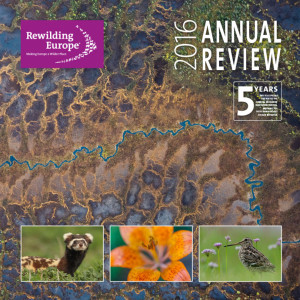 “Two decades ago as a young carnivore conservationist I saw protection as my chief responsibility,”says Karamanlidis. “Now, I see myself as more of a manager. If we manage well, then there is no reason why Europe’s carnivore comeback can’t continue. In the rewilding areas where we are working, this is one of our main drivers.”
“Two decades ago as a young carnivore conservationist I saw protection as my chief responsibility,”says Karamanlidis. “Now, I see myself as more of a manager. If we manage well, then there is no reason why Europe’s carnivore comeback can’t continue. In the rewilding areas where we are working, this is one of our main drivers.”
Recall of the Wild story was first published in the Rewilding Europe’s Annual Review 2016.
